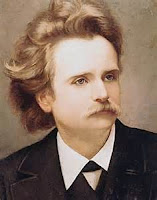I can claim to be a pianistic descendent of Beethoven. Yes, it's true. Not only that, my heritage travels through Czerny, Liszt and Chopin. (Blush.) But I wonder how informative such a claim really is, aside from the fact that I totally identify with the great masters' music and play it all with pleasure and awe.
I grew up hearing about a so-called Russian School of pianism, a
French or German school. I never really considered what those designations intended to convey or whether it was important.
During the Cold War, we undergraduates came under the influence of the Great Sviatislav Richter or Emil Gilels, two dynamic and wildly contrasting Russian exports. I remember gushing to my teacher, Muriel Kerr, having just come from a Richter recital. She sighed and said, "If you must have a Russian god, let it be Gilels." (You can hear Kerr playing Scriabin Op. 8, No. 10, at the age of 17 in the Listen Tab above.)
Richter and Gilels, both students of the legendary Heinrich Neuhaus, could not have been more different in the impressions they made on the audience. Richter
seemed interested in projecting brilliance and virtuosity boardering on the eccentric (Chopin Etude Op. 10, no. 4), whereas Gilels (Brahms Op. 116) seemed the more lyrical and "musicianly." Yet, they both had spectacular technical skill. They were graduates of the same "school" of piano playing, so I concluded that a "school" had to do with the mechanics of playing.
During my time at Juilliard, Rosina Lhevinne was the reigning queen of the piano department, hailed as a remnant of the Russian school. And yet, my friends in her class told me that she did not teach technique. She said as much: "Dear, I don't teach piano." In fact, she had American assistants, Martin Canin and Jeaneane Dowas, to tutor students who needed technical help. I don't know their lineage, other than that they studied with Lhevinne. (?) So much for my theory that a "school" meant the study of mechanics.
A school, then, must be something more ephemeral. Distinguished pianist Stephanie Brown studied with Ania Dorfman, who was born in Odessa but studied with Polish pianist Teodor Leschetizky (student of Carl Czerny) and French pianist Isidor Philipp (studied with George Mathias [pupil of Chopin] and Theodore Ritter [pupil of Liszt]). [Click on the link to hear her play Chopin Nocturne Op. 62, No. 2, recorded in 1938. Notice the robust tone
and absence of misaligned hands.] Leschetizky, according to information handed down by his disciples, developed a "method" of "agility, especially on the weakest fingers." Books are available purporting to describe his "method." According to Leschetizky himself, however, "there is no fixed method and [I] specifically catered to [my] students' individual needs." According to legend, "Leschetizky's students are said to have certain similarities when playing the piano, such as
their sitting position/posture and tone of playing." Philipp, on the other hand, published numerous exercises.
Brown says that "teaching is the passing down of traditions." I wonder if she means something as specific as taking a certain rubato in a particular passage, or phrasing a certain way, or perhaps a particular quality of sound. All of these seem to me to be so personally variable as to be untenable. (In the world of opera, the handing down of traditions has more to do with adjusting the score to suit a certain soprano's particular skill set.) One critic wrote of Brown's playing that she has a "sound of her own and a distinctive artistic personality to match." Perhaps today we have become so internationalized that ferreting out the particulars of national schools is no longer possible, if it ever was.
My connection to a distinguished past, one of them, comes
through John Crown, who had been a student of Moritz Rosenthal in Vienna. Click on the link to hear Rosenthal's recording of Chopin's B minor Mazurka Op. 33, no. 4, recorded in 1935. Notice the delicacy and flexibility—if I knew the steps to the mazurka, I
would get up and dance. Rosenthal claims interpretive authenticity from his studies with Karol Mikuli, Chopin's most influential student. Rosenthal also studied with Liszt.
Another student of Liszt, Emil von Sauer
, recorded Chopin Etude Op. 10, No. 3, in 1928. The style seems to me to be quite "modern," rather straight forward and unfussy. Again, the hands are well together.
I think it is difficult to impossible to trace particular performance style or techniques from our time back to Beethoven with any precision, as much as we may want to romanticize this or that detail. This is not to suggest that we don't study and listen and try to get to the composer's intentions as best we can. But descendants of a particular point of view, it seems to me, tend to become their own points of view. Light a candle. Pour a glass of wine. Moon over a Chopin Nocturne. Enjoy. Identify with pianistic greats. But is any one pianist's interpretative approach more authentic than another? Well, I'll let you decide that.
As for me, despite my distinguished lineage, I credit pianistic knowhow to the work of Dorothy Taubman, which I acquired from her and her chief disciple, Edna Golandsky. Taubman is not a method. It is not a style. Taubman did not invent these movements. She recognized and organized principles of movement based on what the body was designed by nature to do. Having charge of these principles gives me the freedom to play music of the masters, yes, under the guidance of pianists who were guided by earlier pianists, who were guided by earlier pianist, who were guided...
And of course I listen to historic and modern performances, all of which combines in me a concept of style that is at least as much a part of me and from me as it is an amalgamation of all those distant influences. Being even a small part of this continuum is wherein for me lies the joy of making music
A few more historic recordings:
Moritz Rosenthal (1862-1946)
Chopin Black Key Etude
Nine Chopin Preludes (1929-1935)
Chopin Nocturnes Op. 9.No. 2 and Op. 27, No. 2
Emil von Sauer (1862-1942)
Liszt la Campanella
(Slower somewhat more labored)
Chopin Nocturne Op. 9, No. 2
Liszt Concerto No. 1
I grew up hearing about a so-called Russian School of pianism, a
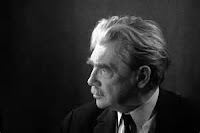 |
| Heinrich Neuhaus 1888-1964 |
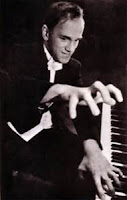 |
| Sviatislav Richter 1915-1997 |
Richter and Gilels, both students of the legendary Heinrich Neuhaus, could not have been more different in the impressions they made on the audience. Richter
 |
| Emil Gilels 1916-1985 |
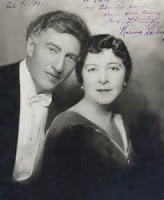 |
| Rosina Lhevinne 1880-1976 (with husband Josef) |
 |
| Ania Dorfman 1899-1984 |
 |
| Teodor Leschetizky 1830-1915 |
 |
| Isidor Philipp 1863-1958 |
Brown says that "teaching is the passing down of traditions." I wonder if she means something as specific as taking a certain rubato in a particular passage, or phrasing a certain way, or perhaps a particular quality of sound. All of these seem to me to be so personally variable as to be untenable. (In the world of opera, the handing down of traditions has more to do with adjusting the score to suit a certain soprano's particular skill set.) One critic wrote of Brown's playing that she has a "sound of her own and a distinctive artistic personality to match." Perhaps today we have become so internationalized that ferreting out the particulars of national schools is no longer possible, if it ever was.
 |
| Moritz Rosenthal 1862-1946 |
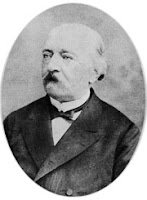 |
| Karol Mikuli 1819-1897 |
Another student of Liszt, Emil von Sauer
 |
| Emil von Sauer 1862-1942 |
I think it is difficult to impossible to trace particular performance style or techniques from our time back to Beethoven with any precision, as much as we may want to romanticize this or that detail. This is not to suggest that we don't study and listen and try to get to the composer's intentions as best we can. But descendants of a particular point of view, it seems to me, tend to become their own points of view. Light a candle. Pour a glass of wine. Moon over a Chopin Nocturne. Enjoy. Identify with pianistic greats. But is any one pianist's interpretative approach more authentic than another? Well, I'll let you decide that.
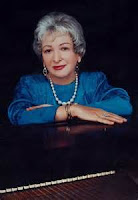 |
| Dorothy Taubman 1917-2013 |
And of course I listen to historic and modern performances, all of which combines in me a concept of style that is at least as much a part of me and from me as it is an amalgamation of all those distant influences. Being even a small part of this continuum is wherein for me lies the joy of making music
A few more historic recordings:
Moritz Rosenthal (1862-1946)
Chopin Black Key Etude
Nine Chopin Preludes (1929-1935)
Chopin Nocturnes Op. 9.No. 2 and Op. 27, No. 2
Emil von Sauer (1862-1942)
Liszt la Campanella
(Slower somewhat more labored)
Chopin Nocturne Op. 9, No. 2
Liszt Concerto No. 1





